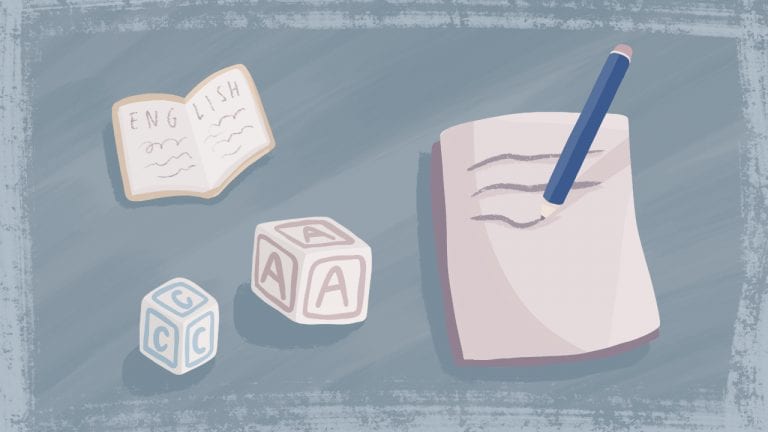
Tips and Steps on Paraphrasing Effectively

What is paraphrasing?
Most of us have been in a situation where we run out of time to formulate our own intellectual property for a specific homework and end up having to Google our way out of the situation. Some may have done this in an ethical way and chose to revise what they have read from a website or book based on their own understanding of the subject matter, but others either choose to just copy and paste the contents of the subject matter because they lack the motivation to revise or just simply lack the skills and techniques needed to paraphrase properly.
Although they face the same dilemma, the second group is more prone to a copyright strike than the other group as it would seem like they took somebody else’s intellectual property and claimed it as their own. The issue can be easily evaded by the use of paraphrasing in order to minimize the risk of a potential copyright strike.
Paraphrasing, as defined by the Merriam-Webster dictionary, is the restatement of a text, passage, or work giving the meaning in another form. Simply put, it is the processing of portraying a text, passage, or any form of intellectual property in a different set of words in order to avoid plagiarism while still being consistent with the meaning of the original work.
Importance and relevance
Paraphrasing plays a vital role in the life of a student. Not only does help avoid plagiarism or any copyright strike from the original author, but it also challenges your vocabulary and creativity as you are asked with giving new life to an intellectual property while still retaining its original meaning.
A well paraphrased passage can also make your thesis papers or any other form of homework seem much more professional and believable. By choosing your words well and providing the adequate sources, your work can feel as though each statement was jam-packed with evidence. And evidence is something that is rather handy when the time comes to present your papers to the panel of judges.
Paraphrasing is not just limited to your theses and research papers, but can also be useful for essays and reports as well. A well-made paraphrase of an excellent paper can aid you better support your claim in an essay and mitigate the risk of any unsupported claims. You can also use paraphrasing in your everyday homework, for example, paraphrasing the words of a well-known physicist to explain why a hydrofoil is one of the main contributors to an airplane’s lift.
Paraphrasing is a very handy skill while studying and once mastered can lead you to a road of not having to worry about plagiarism or copyright strikes anymore.
Step by step process to effectively paraphrase
Every person paraphrases text, passage, or any intellectual property differently, which is proof that we are all unique. However, if you want to learn the fastest way to paraphrase effectively, then we have put up a list of steps and procedures you can do in order to paraphrase effectively. And if you are new to paraphrasing or have not experienced doing it, then it should pose no problems as this list will start from the very basics of paraphrasing.
And without further ado, here are the steps and procedures on how to paraphrase:

1. Understand the original work
The very first step needed to create an effective and well-made paraphrase is for you to understand what the original work means or what it is trying to imply. This is crucial due to the fact that what a paraphrase needs most other than a unique portrayal of the text or original work is for it to retain what it originally tries to imply.
If you were to just revise a text, passage, or any intellectual property without understanding the concept and meaning behind the original text, then you may end up with unnecessary words or phrases which serve no correlation to the original work and is there just to become filler for the parts of the original work you failed to understand.
This will make you paraphrase seem uninteresting and unrelated to the original work which is a very undesirable result. To limit the chances of this ever happening to you, you can reread the original passage over and over again until you have fully grasped what the original work is trying to imply.
By doing so, you not only realize what the original work is trying to imply, but also learn the structure of the entire text, passage, or any intellectual property you are trying to paraphrase. You can then formulate your own paraphrase which is different from the structure of the original work while still retaining the meaning of the original work.
2. Start your own draft
After understanding the original work like how you understand your neighborhood, you can then start to create your own draft. Anything will work so long as it is not a direct copy of the original work or a thesaurus-fueled version of the original work.
You can start your draft with just a few important phrases and work your way from that. You can then add even more details and information from the original work while making sure that the words and phrases you use are unique and present the original work in a different way.
3. Make sure to include what is important
The next thing you should do is to revisit your draft and make sure you have included the important parts of the original work. Things like the actual data, the size of the population involved or any other important details included in the original work.
However, you can choose to rearrange the data as you see fit or choose other words which you feel would better suit your paraphrase better. This can help your paraphrase retain some of its original structure while still feeling fresh and new.
4. Review your rendition
By now, you would have mostly finished your paraphrase and is confident about it, but there are still a few steps left. The next thing you should do is to review your rendition or the original work and try to see it in an unbiased manner.
Think of it as trying to find a loose thread within your most beloved shirt. It doesn’t feel good when you do find one, but it can help make your favorite shirt live longer. Whenever you find a flaw within your paraphrase, be it a few irrelevant phrases, points that don’t add up, or poor choice of words. Try your best to correct those mistakes as it will save you the time and hassle of trying to clarify what you mean or arguing whether it truly is a paraphrase or a thesaurus-fueled copy of the original.
Revision is an important aspect of paraphrasing as it allows you to choose the best format, words, and tone to present your paraphrase while still paying homage to the original work.

5. Enclose unique passages with quotation marks
No matter how much of a vocabulary genius you are, there will still be a few words or phrases which are purposefully unique and cannot be changed. In the event that you encounter such words or phrases, be sure to enclose them within quotation marks.
This allows your professor or whoever is reading your paraphrase to understand that those words are uniquely used in the original work and has no substitute. You also dodge the plagiarism bullet by doing so as long as you give citations to the original work.
Enclosing unique passages with quotation marks shows that you are capable of understanding which parts of the original wok is unique. This leads to a more professional looking paraphrase and also makes your paraphrase retain the original use of the unique passage while still offering a new and unique perspective of the original work.
6. Cite the source material
As previously mentioned, giving citations to the original wok is a great way to avoid the plagiarism bullet. This is a very important step when paraphrasing as you still do not own the intellectual property you are writing and s only trying to portray the original work uniquely.
Plagiarism is one of the banes of a student’s life and can easily be avoided by citing the sources properly. There is no shame in admitting that the cool sounding data you used to back up your claims in your super rad essay was derived from a 54 year old French scientist. In contrast, you should be proud as you are knowledgeable enough to know that citations are needed and you have invested time into your work by diving deep into research for our claims.
The hassle of citing every source material may be detrimental to your willpower, but it can save you a whole lot of money and jail time from plagiarism. After all, a few minutes of writing down source material is still better than a year spent in jail due to plagiarism.
Another way to make sure your paraphrase is well made is to consult another individual on his/her opinion about your paraphrase. It can be a close friend, someone professional like your teacher, or even your tutor. If you do not have a home tutor, then why not visit us at FamilyTutor? We are a home tuition in Singapore aimed to give you the best home and online tutoring services within reasonable rates. We have thousands of highly skilled home tutors ready to teach individuals from pre-school up to university level. If you are interested then feel free to hire one of our tutors at FamilyTutor.

Carelle
Carelle is a teacher who has been through the ups and downs of the teacher and learner life. She wishes for every learner to gain educational satisfaction that will help embody the people they want to be in the future.
Tell Carelle Below What You Think About Her Post!

About FamilyTutor!
FamilyTutor is an established home tuition agency in Singapore! We match suitable home tutors for our clients not just to improve the students' academic grades, but also to build a strong rapport and meaningful relationship with the students and even the their whole family. FamilyTutor put every student in good hands!
If you need an excellent home tutor, feel free to call/WhatsApp us at +65 8777-2168! Our matching service is free!
Related Posts!
Follow Us On Facebook!
Education Levels
National Exams
Math & Science Subjects
Language Subjects
Japanese Tuition
Korean Tuition
German Tuition
Humanities Subjects
Social Studies
Chinese Literature Tuition
About Us
FamilyTutor is an established and the people’s favourite home tuition agency in Singapore! We match a suitable tutor for you not just to improve the student’s grade, but also to build a good rapport and meaningful relationship with the student and even with the student’s whole family! With FamilyTutor, every Singaporean son & daughter is in good hands.
Contact Us
- 8777 2168
- 8777 2168
- Mon-Sun 9am-10pm (Including PH)
- [email protected]
- 17 Petir Road Singapore 678278



